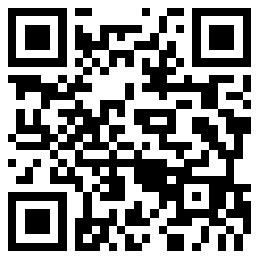數(shù)字醫(yī)療投資重現(xiàn)火爆局面

|
????對于美國人來說,11月是個特殊的月份,因為他們要在這個月重新登記參加醫(yī)療保險,并且他們將算清楚來年的醫(yī)保費(fèi)用是“僅僅”增加5%,還是增加兩位數(shù)。 ????今年,在控制這種看上去不合理的醫(yī)保費(fèi)用上漲方面,科技的潛在作用得到了更多人關(guān)注——這在很大程度上是由于人們對運(yùn)動手環(huán)等消費(fèi)類電子產(chǎn)品的樂觀期望。據(jù)創(chuàng)業(yè)孵化器Rock Health統(tǒng)計,截至今年6月,數(shù)字醫(yī)療科技類公司的融資總額已達(dá)到23億美元——超過了去年的總額。 ????僅本月就有兩個明顯的例子:施樂(Xerox)史無前例地投資遠(yuǎn)程醫(yī)療公司HealthSpot,后者計劃將其遠(yuǎn)端臨場醫(yī)療設(shè)施安裝到醫(yī)療機(jī)構(gòu)和大公司內(nèi);制藥業(yè)巨頭諾華制藥公司(Novartis)對能夠跟蹤藥效的可穿戴技術(shù)表現(xiàn)出日益濃厚的興趣。 ????數(shù)字醫(yī)療成為熱門的另外一個跡象,是移動醫(yī)療公司Castlight Health在今年秋天公布的客戶吸引力。該公司在3月進(jìn)行了頗具爭議的IPO。(公司最初上市時的市值約為30億美元,但其現(xiàn)在的市值卻一直維持在10.1億美元。) ????美國雇主每年的醫(yī)療福利支出達(dá)到驚人的6,200億美元,但他們卻很難跟蹤這筆錢的去向。而Castlight則可以將這筆支出摸得一清二楚,供至少40家《財富》美國500強(qiáng)公司了解其流向,這些公司包括谷歌(Google)、卡夫食品集團(tuán)(Kraft Foods Group)、微軟(Microsoft)和沃爾瑪(Wal-Mart)。 ????這項企業(yè)醫(yī)療保健云服務(wù),將顯示出公司員工的醫(yī)療支出,包括膽固醇測定、磁共振成像(MRI)掃描以及健康體檢等多個項目。這些數(shù)據(jù)不僅可以幫助雇主更有效地了解醫(yī)療福利費(fèi)用,也可以讓員工對他們想要付費(fèi)的項目和可以獲得的保健質(zhì)量做出更明智的決定。 ????Castlight Health公司的CEO兼聯(lián)合創(chuàng)始人喬瓦尼?“吉奧”?科萊拉表示:“他們有一個系統(tǒng),其中包括對醫(yī)療福利費(fèi)用的大量分析。”科萊拉之前的公司RelayHealth在2006年被麥克森公司(McKesson)收購。科萊拉的聯(lián)合創(chuàng)始人包括托德?帕克(電子病歷管理公司Athenahealth的聯(lián)合創(chuàng)始人,同時也是一位技術(shù)專家,曾幫助解決美國醫(yī)保網(wǎng)站Healthcare.gov的故障)和風(fēng)險投資人布萊恩?羅伯茨(風(fēng)投公司Venrock)。 ????例如,Castlight的一位客戶發(fā)現(xiàn)某個部門內(nèi)背部疼痛的發(fā)病率之高,有些異常。于是,該公司針對這一問題提出了一項人體工學(xué)解決方案,削減了這部分醫(yī)療費(fèi)用,科萊拉說道。 ????那么,Castlight是如何說服幾乎所有的保險公司披露這些信息的呢[只有聯(lián)合健康保險公司(United Healthcare)因排他性條款未披露相關(guān)信息]?通過說服客戶索要這些信息。目前,該服務(wù)涵蓋了多數(shù)醫(yī)療程序和藥物信息。公司即將推出包括牙科保健計劃和行為健康的服務(wù)。 ????Castlight宣稱截至第三季度末共有159家客戶。其最近公開的收益報告顯示,公司今年的預(yù)期收益為4,390萬美元至4,430萬美元,預(yù)期損失7,400萬美元至7,500萬美元。(公司CEO和CFO計劃在本周晚些時候召開兩次投資者會議,公布最新財務(wù)數(shù)據(jù)。) |
????Ah, November, that special time of year when Americans get to re-enroll for health insurance and find out whether their costs will go up “just” 5% or whether they face a double-digit increase for the year to come. ????This year technology’s potential role in controlling seemingly unjustifiable increases is getting more attention than ever—in part because of wildly optimistic expectations surrounding consumer gadgets such as fitness bracelets. By June, funding for digital healthcare technology companies reached $2.3 billion—surpassing the previous year’s total, according to Rock Health, a startup incubator. ????Two illustrative examples from this month alone: Xerox’s unprecedented investment in telemedicine company HealthSpot, which plans to install its kiosks not just at medical facilities but also at big companies; and pharmaceutical giant Novartis AG’s growing interest in wearable technologies that can track the effectiveness of its drugs. ????Another indicator is the customer traction being reported this autumn by Castlight Health, which made its rather controversial I.P.O. in March. (The company debuted with a market cap of almost $3 billion, but its value currently stands around $1.01 billion.) ????Every year, U.S. employers spend a whopping $620 billion on healthcare benefits with very little visibility into where that money goes. Castlight puts those costs under the microscope for at least 40 Fortune 500 companies including Google, Kraft Foods Group, Microsoft, and Wal-Mart. ????Its service, called Enterprise Health Cloud, shows the prices a company’s employees pay for everything from cholesterol tests to magnetic resonance imaging, or MRI, scans to wellness visits to their doctor. The vision is to help employers better understand these cost and to let employees make more informed decisions about what they can expect to pay and about the quality of care they will receive. ????“They have a cockpit where they get a ton of analytics about where the money is spent,” said Castlight CEO and co-founder Giovanni “Gio” Colella, whose previous company, RelayHealth, was acquired by McKesson in 2006. Collela’s co-founders were Todd Park (co-founder of Athenahealth and the tech guru who helped fix the troubled Healthcare.gov site) and venture capitalist Bryan Roberts (Venrock). ????One Castlight customer, for example, discovered an unusually high incidence of back pain issues within certain departments. The company came up with an ergonomic solution to this problem, paring back on those medical costs, Colella said. ????How did Castlight convince almost every insurance company (except United Healthcare because of an exclusivity clause) to disclose this information? By convincing businesses to demand the information. Right now, the service covers most medical procedures and pharmacy information. Offerings that cover dental plans and behavioral health are in the wings. ????Castlight boasted 159 customers at the end of the third quarter. According to its latest earnings report, the company expects to generate $43.9 million to $44.3 million this year, with anticipated losses of $74 million to $75 million. (Its CEO and CFO are scheduled to present updates at two investor conferences later this week.) |
-
熱讀文章
-
熱門視頻











